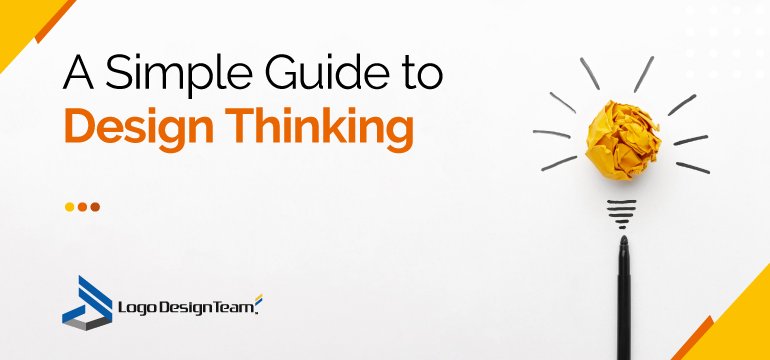Traditionally, solutions are created first, and then their consumer is determined. In design thinking, the opposite is true.
In this case, the target user is first determined. And not only age or occupation. Understand the challenges and frustrations users face. Based on this, the product is developed. In this case, solutions satisfy not only the basic, most obvious need, but also hidden ones. Unlike the traditional analytical approach, design thinking is a purely creative process. It is completely user-driven. Allows you to develop incredible ideas and suggest the best solutions.
In this article, we will look at the design thinking algorithm. After reading it to the end, you will know 6 steps, by going through which you can master the approach.
Empathy is the centre of the human-centred design process
“Empathy – this is the first step towards design thinking,” says Tom Hayes, a UX designer at Essay Tigers. It represents the ability to understand another person and empathise with his emotional state. In design, it ensures the creation of a product that meets the needs, desires and abilities of users. You can recognise the emotions of a person while interacting with the interface. Is navigation convenient? Is there any disappointment at the sight of the layout?
Empathic design is not about “average” needs. It’s about specific desires. The purpose of design thinking is to uncover the hidden needs of target users.
Empathy requires a focus on the intrinsic motivation of clients. It can be understood through non-judgmental observation. The task is to collect real information about users and use it when creating a product.
Empathic research methods:
1. Communication from a beginner’s perspective
2. Empathic interview
3. Observation
Focus – the only way to find the right solution is to get the problem right
The problem posed determines the motion vector. Therefore, it is important to plan it correctly. The problem must come from the information gathered during the empathic research phase.
Correctly posted, it will provide answers to the following questions:
1. What? What problem are we solving?
2. Who? Who is it for?
3. How? What methods can be used for this and how to apply the solution in the future?
Formulate the problem in a moderately narrow way. This will set the vector for thinking, leaving enough space for creative freedom. Don’t get hung up on “how?” Instead of looking for answers to one question, innovate your solutions. Special techniques will help with this. They help you find the right solution for your specific product and situation. Below we will give examples of some of them.
5 Whys
A method that provides an in-depth understanding of the cause and effect of a problem. The task is to voice the problem and ask, “Why?” At least 5 times. This will allow you to go deeper and discover the root cause of the difficulties.
Grouping ideas into diagrams
Collages are a great way to visualise collected information, providing deeper insight. Observations, ideas, notes and stories are added here.
Empathy maps
Good for in-depth analysis of collected observations. The cards add words, actions, thoughts and feelings of the target audience when interacting with the product. The last two are the most valuable.
4Ws
The essence of the method is to identify the problem by providing answers to four questions:
1. Who? Who is the solution to the problem-focused on?
2. What? What is the problem facing the user?
3. Where? Where is the problem? Is it physical, digital, or mental?
4. Why? Why is the solution important to the user?
Point of view
To compile it, they combine elements of empathy, user needs and a description of the target audience. The challenge is to formulate an effective and compelling statement.
Generation of ideas – it is not a good idea that is important, but broad opportunities
The goal of the stage is to ignite creative thinking and come up with many options for solving the problem. Make the most of the creativity of the team. Idea generation methods will help with this.
Bodystorming
In fact, this is a user experience simulation. The task is to recreate it as much as possible. To do this, it is necessary to create the conditions and environment in which the product would be used if it already existed. One team member and user role.
The task is to test the user’s feelings in place. To do this, you can use any props, including furniture, stationery, lighting, and more. Feelings, difficulties and wishes that arise in the process of using the product are recorded. The method allows you to be in the place of users. Problems are discovered empirically, which makes it possible to come up with suitable solutions on the spot.
Brainstorm
The essence of the method is the participants sounding out any solutions they come up with. Moreover, criticism is prohibited. First, the participants share their ideas and then discuss them with the group.
Lightning Demos
Best examples can be used to generate innovative ideas. This method is based on this. Find companies that have tried to solve a similar problem. Analyse their work. How did they do it? What tools, workflows, and techniques did the companies use to solve the problem?
4 Step Sketching
The method is aimed at generating a large number of quality ideas. To implement it, you need to own a certain amount of information. Therefore, the best option is to combine this technique with the previous one.
Idea selection – to identify viable ideas they need to be filtered
Practice shows that the selection of ideas should not be carried out in the format of an open discussion. It is suitable for extroverts. However, the opinion of the reserved team members will be ignored.
The best option is point voting:
1. Give each team member a list of ideas.
2. Let them look at them.
3. Ask everyone to silently mark the idea that seems best.
Prototyping – iterative creation of layouts that will help you find the right solution
Users are at the centre of design thinking. However, there are also questions about the feasibility and viability of ideas. It is worth finding out before creating a product. Prototyping will help with the task.
Prototyping makes the conversation about solving a problem more constructive. You can see exactly what the solution actually looks like. Also, prototyping will allow you to clearly see the cost of implementing an idea. So, to assess the feasibility of the solution.
If the idea is appropriate, prototyping will show the key stages of its implementation. Therefore, in the future, plan the process of implementing a full-fledged product.
In the process, remember the following:
1. Make prototypes with high precision.
2. Invest in moderation.
3. Approving and refuting ideas is equally valuable. The main task is to make a constructive design decision.
Testing – getting feedback
The best way to find out if a solution is right for your users is to ask. This is what testing is for. It is an essential part of the design thinking process.
Let customers use a prototype and ask them to share their impressions. This can be done in person or using an online survey tool. What features did they like? Should I remove something? Perhaps you need to modify a specific function? Users’ answers to these questions will allow us to improve the product and offer a better solution.
Conclusion
Design Thinking is an up-to-date solution that allows you to meet user needs at a much deeper level. With it, you always offer innovative solutions. Moreover, you are aiming at a qualitative deep improvement of the product. This guarantees the best user experience. And with it the growth of the company’s income. So if you haven’t used design thinking yet, now is the best time to start.





